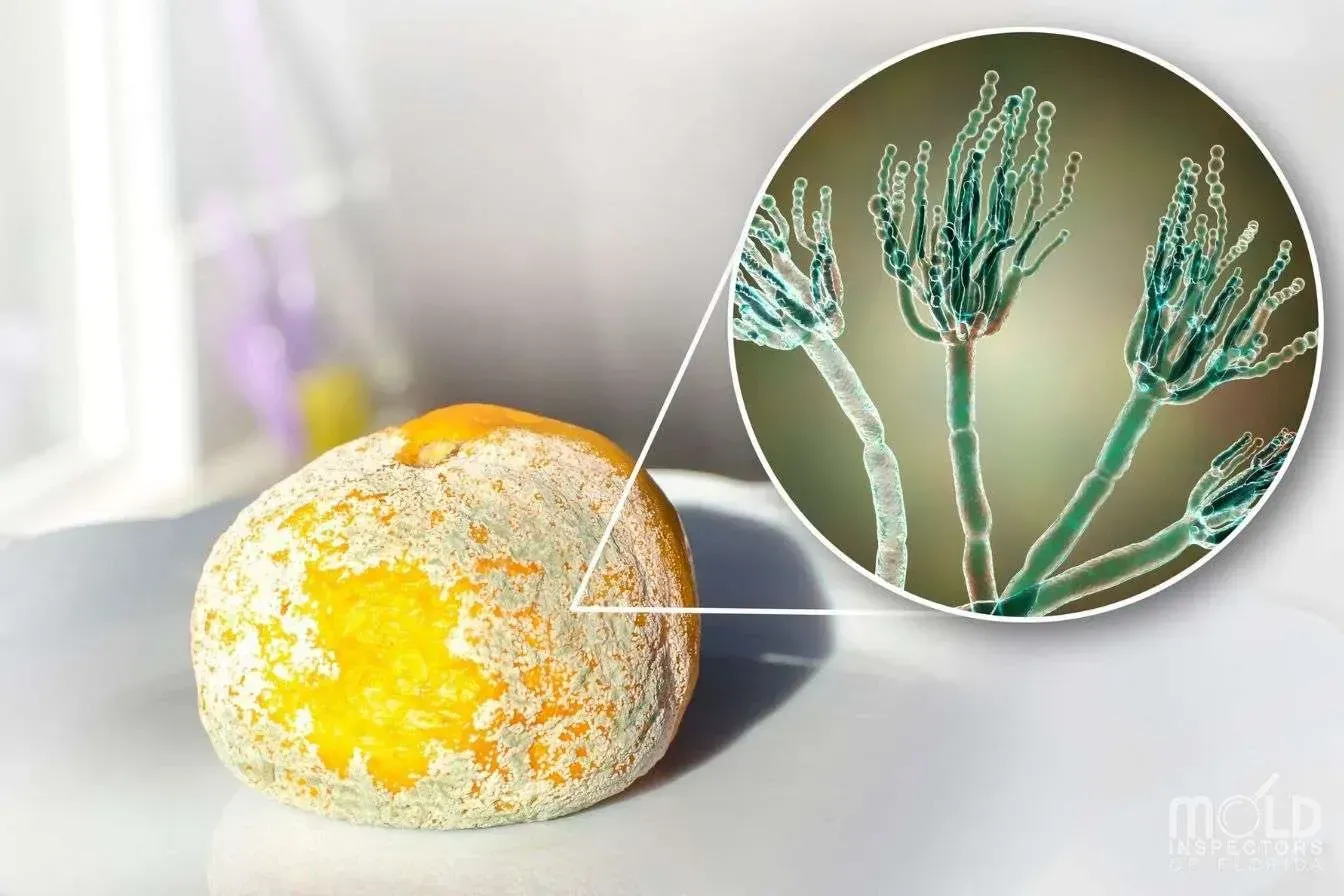The Truth About Mold on Food

While mold may seem harmless, it’s important to know the truth about mold on food! Can it harm you? Should you toss it? We’ll take a look at some potential concerns, which foods mold quickly, and some tips for you to follow.
Imagine, you just finished the best workout you have had in a long time. You worked up a sweat, you are dreaming of that perfectly juicy Florida orange waiting for you when you get home. Only to find, when you open the refrigerator, utter disappointment. That once perfectly plump, bright and juicy orange is now shriveled, fuzzy, and green. You may want to discard the moldy peel and eat the rest of the orange. The peel protects the fruit, right? Wrong. Mold on peels can penetrate beneath into the flesh of the fruit! As well as spread microscopic spores another 2cm away from the visibly affected area.
How careful are you with the food you ingest? It may be time to learn the truth about mold on food.
The Truth About Peels
While it may be tempting to remove the peel barrier and eat the fruit, as mentioned above, don’t. This does not remove the risk of ingesting mold. When mold is present on fruits with softer peels like oranges and bananas, you’ll want to throw them away. Because the mold can penetrate this barrier and infest the fruit. Firm fruits such as pineapple have a tougher barrier. That may protect the fruit flesh from minor mold growths. Cutting away the affected areas, cutting an extra 2-2.5cm of non-visible mold, could be safe to eat. But treat these as a case by case scenario. When in doubt, throw it out!
Finally, for fruits such as the avocado with a tough skin but easy to peel, discarding may be the safest choice. While some outside dangers may stop at this barrier, molds can still breakthrough. And infect the fruit underneath. For fruits with a peel, it can be a tricky game, but remaining cautious is always most important!
Foods That Mold Fast
Mold needs water, nutrition, and oxygen to grow. All these necessities, we find in food, which is why our food can become moldy so easily. Storage containers block the amount of oxygen provided to the food. This will have a significant effect on the time frame that mold takes hold of food. Food that has a high-water content will mold faster than others. This is because mold draws from the moisture content for growth. Fruits and berries, cucumbers, and bell peppers are all high-water content produce. These will mold before other foods in the refrigerator or on the counter. Bread molds faster when stored at room temperature than it will in the refrigerator.
Health Concerns Of Ingesting Moldy Food
The effects of mold around the home differ from person to person. This difference in reaction is due to the individual immune response each person has. If a person is allergic to mold, then the reaction will be more severe. They’ll experience symptoms such as coughing, sneezing, itchy eyes, or even vomiting. If a person doesn’t have mold allergies, ingesting molds can still cause unwanted illness. They may experience irritation of the respiratory, urinary, and gastrointestinal systems. While some molds are allergenic, other molds produce poisonous mycotoxins. At times, this can become fatal to some people.
Tips For Preventing Mold Growth On Food
No one wants wasted food, so the best way to avoid this is by preventing mold growth in the kitchen!
· Consume early, Don’t Over Shop: Having too much food purchased at one time leaves you with a short window to consume. You’ll want to eat it before it gets moldy. Shop for a reasonable amount at a time and try and eat at home more than out when you do. This shopping strategy will help you consume your food before it goes bad and it has a financial perk to it as well!
· Keep It Cool: Keep food, especially moist and soft foods, such as fruits and breads, in the refrigerator. To keep foods better longer, freeze it! Mold prefers warmer moist climates and will take longer to invade food in the fridge.
· Heat It: For preserving fruits, jams, or jellies, boiling water baths are a safe practice. Depending on what you are canning, the time of the water bath will vary. This technique will help keep out molds as well as bacteria for a longer shelf life.
· Clean Clean Clean: As annoying as one more task is to your to-do list, keep a clean kitchen! This will greatly impact the effect of mold on your food and your home. Keep the counters and appliances clean. This includes the rubber seal of the refrigerator, which can grow mold unseen for quite some time. Keep your moist fabrics such as dishcloths, sponges, mops, and sponges clean. That musty smell they produce after some time is a sign it is harboring mold. If the item does not look or smell clean after washing, it’s time to replace it.
We hope this information proves to be helpful in your day to day living. While living around mold is inevitable, there are practical things we can do. Applying a little bit of knowledge about food and mold can go a long way and keep you healthy too!
Though mold growing on food is a common occurrence, mold growing in your home, outside of being on food, is not. If you see or smell anything that seems odd or musty, don’t wait to have that investigated further. Mold can be very sneaky and you could have an issue lurking in places that you are unable to see. Give us a call at Mold Inspectors of Florida today. Our certified inspectors will do a visual inspection, and if necessary, take samples. We’ll provide you with an extensive comprehensive report of our findings in 72 hours or less!
Call us at (239) 233-1705 or contact us online!
We love our online community! Connect with us on Facebook, Instagram, and Twitter!


